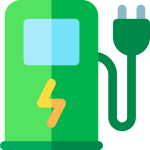The federal government’s decision to target a dramatic reduction in vehicle CO2 emissions by 2035 – a goal that effectively requires around half of all new passenger cars sold to be battery electric vehicles (EVs) within the next decade – has exposed fault lines across Australia’s automotive sector. While green groups and parts of industry welcome the clarity of ambition, carmakers, dealers and service providers warn the target will be difficult to meet without much stronger policy support, investment and workforce planning.
What the target means
The Climate Change Authority’s “2035 Targets Advice” recommended a 62-70 per cent reduction in CO2 emissions from 2005 levels by 2035. In transport terms, reaching the lower bound of that range implies a dramatic shift in the composition of the light vehicle fleet: more than five million passenger cars that would otherwise be petrol or diesel would need to be electric by the target date. That translates to roughly 50 per cent of new car sales in 2035 being battery electric vehicles (BEVs) – a rate that would require persistent, accelerated uptake over the next decade.
Industry reaction: cautious and conditional
Representatives of the local automotive industry have been vocal about the scale and complexity of the transition.
The Federal Chamber of Automotive Industries (FCAI) notes that manufacturers have been increasing choice – today the market includes more than 100 BEV models and a growing number of plug-in hybrids – but also points out that sales volumes are not yet at the pace required to meet the government’s emissions goal. FCAI chief executive Tony Weber has emphasised that structural barriers remain, including purchase price, total cost of ownership, and the patchiness of charging infrastructure.
The Victorian Automotive Chamber of Commerce (VACC) has echoed those concerns and warned of a looming mismatch between vehicle electrification and the industry’s capacity to service, repair and maintain EVs. The VACC has called for long-term investment in charging networks, technician training and incentives that help workshops re-tool for high-voltage systems. Its recommendations include extending state and territory incentives, scaling up a national charging network and funding comprehensive training programs to upskill the automotive workforce.
Carmakers and retail networks are similarly cautious about speed. Some senior industry figures have suggested that BEVs will unquestionably be part of the future mix, but that a rapid, near-term dominance is unlikely – particularly given the role of hybrids, consumer preferences, supply chains and price sensitivity in Australia.
Charging infrastructure and public funding
In announcing the emissions goal, the federal government committed $40 million to support kerbside and DC fast-chargers. Industry groups have welcomed the funding but described it as a modest first step that falls well short of what is needed to eliminate range and charging anxiety across metropolitan, regional and rural Australia.
A functional national charging architecture will require:
- Significantly greater capital investment in DC fast-charging corridors, urban public charging and kerbside solutions.
- National interoperability and minimum technical standards so drivers can reliably access chargers across networks.
- Coordinated planning between federal, state and local governments to site chargers where they are most effective for commuters, regional travel and freight.
- Electricity market reforms, including time-of-use pricing and incentives for managed charging and vehicle-to-grid (V2G) technologies.
Policy levers that matter
Industry groups and the Electric Vehicle Council (EVC) point to a package of complementary policies necessary to create demand and supply-side confidence:
- Strengthened and predictable regulatory settings, including an effective New Vehicle Efficiency Standard (NVES) with clear mid-term reviews and escalating ambition.
- Financial incentives or tax measures that narrow the upfront price gap between internal combustion and electric models, and support lower-income buyers entering the EV market.
- Fleet procurement mandates for government and large private fleets to create steady demand and stimulate the used-EV market.
- Targeted support for second-hand EV availability – critical for broader consumer acceptance.
- Policies to tackle heavy vehicle emissions, recognising that decarbonising buses, trucks and freight will require batteries, hydrogen, synthetic fuels and infrastructure investment.
Heavy vehicles and broader transport emissions
The EVC and other advocates have stressed that passenger cars are only part of the story. Transport is already the fastest-growing emissions source in Australia and is projected to be the largest by 2030 without serious intervention. Heavy vehicles, maritime and aviation are therefore pivotal. Decarbonisation pathways for heavy transport are more complex – long-haul freight, for instance, may require hydrogen or synthetic fuels alongside electrification – and will demand targeted investment, trials and regulatory support.
Workforce, serviceability and supply chains
A sustained EV transition creates opportunities but exposes vulnerabilities. Automotive service capacity needs to be rapidly reconfigured: technicians must be trained in high-voltage systems, battery diagnostics and electric drivetrains; workshops require new tools and safety protocols; and parts supply chains must adapt. Industry bodies warn of a “critical shortage” of EV-ready service centres if action is not taken in the near term.
On the supply side, the global competition for battery raw materials and manufacturing capacity underlines the importance of domestic investment in battery supply chains and downstream manufacturing where feasible. Local capability would also cushion the market against international supply shocks and support jobs in regions transitioning away from fossil-fuel industries.
Where progress can be made
Despite the challenges, there are pathways to accelerate uptake:
- Stronger incentives tied to emissions outcomes and fleet decarbonisation.
- Large-scale public charging investments targeted at arterial travel and regional equity.
- Better consumer information about total cost of ownership, safety, and maintenance savings.
- Scrappage or trade-in programs that prioritise low-income uptake and faster turnover of high-emission vehicles.
- Trials and pilot programs for V2G, managed charging and integrated urban planning that supports EV-friendly housing and parking.
Conclusion
Australia’s 2035 CO2 reduction target for light vehicles is an ambitious but achievable policy goal – provided it is matched by a coherent suite of policies and investments. Lawmakers can set the trajectory, but success will depend on rapidly scaling charging infrastructure, incentivising consumer uptake, upskilling the workforce and ensuring supply chains adapt. Without these measures the target risks remaining aspirational rather than deliverable. With them, Australia can capture the air-quality, economic and grid-stability benefits of a cleaner transport sector while supporting jobs and regional development through the transition.
Frequently asked questions
What does the 2035 target really require for new car sales?
It effectively requires that about half of new passenger cars sold in 2035 be battery electric vehicles (BEVs). Achieving the Climate Change Authority’s lower-bound CO2 reduction would mean roughly five million EVs added to the light vehicle fleet compared with a business-as-usual trajectory.
Is Australia on track to meet the target?
Not yet. EV market share has been increasing but remains well below the sustained, high uptake needed to meet a 50 per cent new-car share by 2035. Industry groups say greater incentives, charging deployment and supportive regulation are necessary to close the gap.
What is the New Vehicle Efficiency Standard (NVES) and will it help?
The NVES is the federal regulatory mechanism designed to reduce emissions from new light vehicles sold in Australia. It creates manufacturer-level targets and penalties to encourage lower-emission models. The NVES is an important tool, but governments will need to pair it with infrastructure, fiscal measures and consumer-focused policies to ensure sufficient EV uptake.
Will the $40 million for chargers be enough?
No. While welcome, the $40 million committed for kerbside and DC fast-chargers is widely regarded by industry as insufficient to build a comprehensive network across cities, regional centres and long-distance corridors. Private investment, larger public funding programs and clear regulatory frameworks are needed.
How will the transition affect car prices and ownership costs?
Upfront EV prices remain higher than many comparable petrol models, partly due to battery costs and market supply. However, total cost of ownership for EVs can be lower over a vehicle’s life because of reduced fuel and maintenance costs. Policies that lower upfront price gaps – such as incentives or tax adjustments – can accelerate adoption.
What about heavy vehicles and freight?
Decarbonising heavy transport is complex and requires parallel pathways: electrification for short-haul and urban vehicles, hydrogen and synthetic fuels for long-haul freight, and targeted funding for infrastructure. Heavy vehicle emissions are a crucial part of meeting overall transport-sector targets.
About EV Evolution
EV Evolution is the leading online platform dedicated to Australian electric vehicle owners and enthusiasts. We foster a vibrant community, delivering essential EV news and insights, and enhancing user engagement through our innovative, AI-powered chatbot for dynamic discussions. Our mission is to empower Australian electric vehicle owners and enthusiasts by fostering a vibrant, AI-driven online community that connects, informs, and advances the nation’s electric vehicle landscape.




